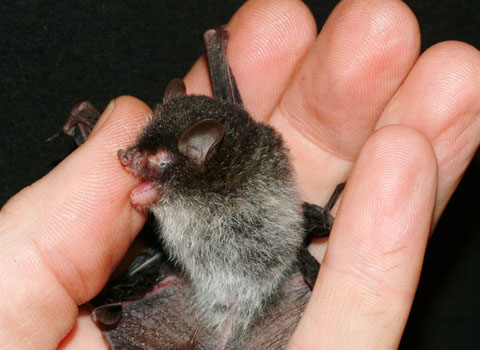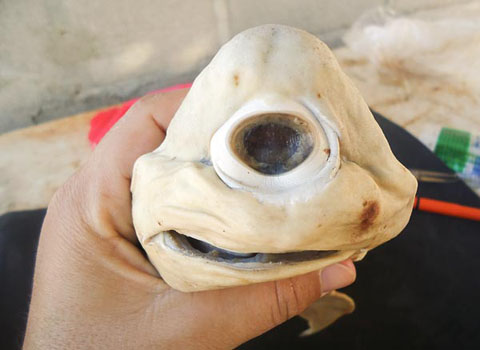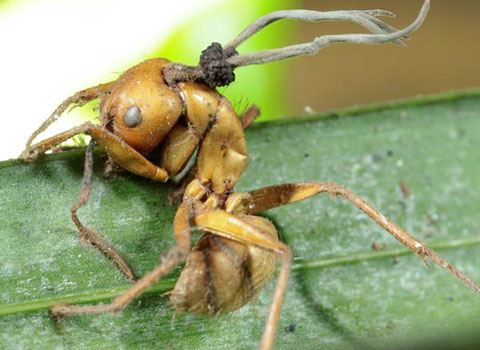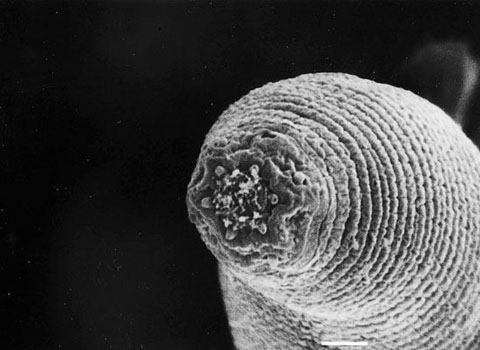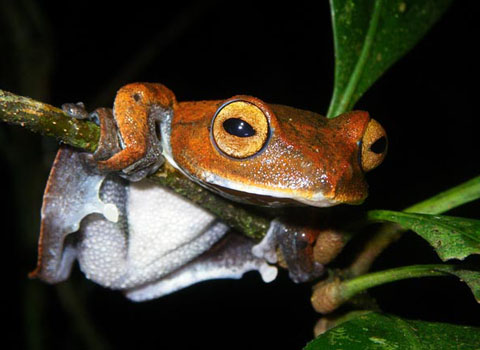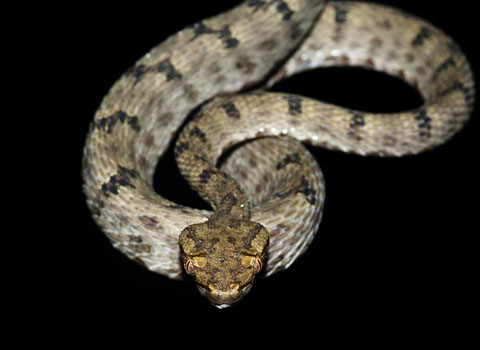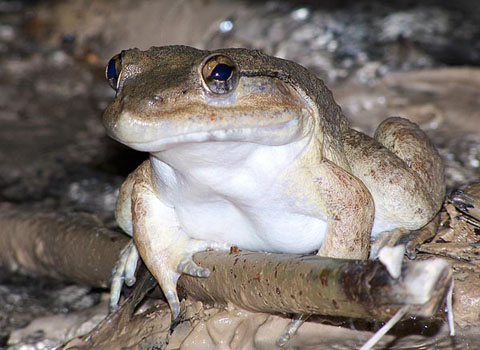VietNamNet Bridge – Among nine spooky species that were found in the world this year, Demon Bat, Vampire Flying Frog and Ruby-Eyed Pit Viper are discovered in Vietnam.
Demon Bat: The Fauna & Flora (FFI) has discovered three new species of bat in Southeast Asia, including the Demon Bats or Beelzebub bats in Vietnam. Named for its diabolic coloration, the recently discovered bat has a black head and dark back fur, both of which contrast sharply with the flyer's whitish belly. Despite the fiendish name, Beelzebub bats are typically shy creatures, doing their best to avoid humans in their remote rain forest habitat in Vietnam, scientists say.
If captured, however, the bats can turn fierce, said Neil Furey, a biologist with the conservation group Fauna & Flora International. "Once in the hand, they will do their best to escape," said Furey, co-author of a study released in September. "In essence, they exhibit a 'flight' first and 'fight' second response - the latter only when they have no other option."
Cyclops Shark: A fisherman found an extremely rare Cyclops shark in the stomach of a shark in California bay, Mexico recently.
The 22-inch-long (56-centimeter-long) fetus has a single, functioning eye at the front of its head—the hallmark of a congenital condition called cyclopia, which occurs in several animal species, including humans.
Scientists have documented Cyclops shark embryos a few times before, said Jim Gelsleichter, a shark biologist at the University of North Florida in Jacksonville.
The fact that none have been caught outside the womb suggests Cyclops sharks don't survive long in the wild.
"Mind Control" Fungus: A stalk of the new fungus species Ophiocordyceps camponoti-balzani; grows out of a "zombie" ant's head in a Brazilian rain forest. Originally thought to be a single species, called Ophiocordyceps unilateralis, the fungus is actually four distinct species—all of which can "mind control" ants, scientists announced in March. The fungus species can infect an ant, take over its brain, and then kill the insect once the fungus moves to a location ideal for the fungus to grow and spread its spores.
Devil Worm: A "devil worm" was found miles under the Earth - the deepest-living animal ever found, according to a study published in June. The discovery of the new nematode species, called Halicephalobus mephisto partly for Mephistopheles, the demon of Faustian legend - suggests there's a rich, largely unknown biosphere beneath our feet, scientists say.
Vampire Flying Frog: The mountain jungles of Vietnam are home to a new breed of "vampire"—a "flying" tree frog, dubbed Rhacophorus vampyrus, announced in January. First found in 2008, the two-inch-long (five-centimeter-long) amphibian is known to live only in southern Vietnamese cloud forests, where it uses webbed fingers and toes to glide from tree to tree. Adults deposit their eggs in water pools in tree trunks, which protect the offspring from predators lurking in rivers and ponds.
"Evil Spirit" Dinosaur: A recently discovered dinosaur species boasts a very unusual skull, according to a study published in April. "It has a deep, short snout and these monstrous front teeth," said study co-author Hans-Dieter Sues, a vertebrate paleontologist at the National Museum of Natural History in Washington, D.C. These features helped earn the new dinosaur the name Daemonosaurus chauliodus, or "buck-toothed evil spirit" in Greek.
Tiny Pit Viper: A new Chinese snake species announced in July is one of the littlest pit vipers in the world. The new snake, Protobothrops maolanensis, was an unexpected "surprise gift for us," study leader Jian-Huan Yang said in an email. Yang and colleagues found the species during a survey of forests in Maolan National Nature Reserve in Guizhou, China. Growing to a maximum length of about 2.6 feet (0.7 meter), the new pit viper is the smallest known so far in the country.
Fanged Frog: A new group of so-called fanged frogs - including this new species, tentatively named Limnonectes species I - was discovered on the Indonesian island of Sulawesi, scientists announced in August. In all, 13 new "fanged" species were seen on Sulawesi for the first time, 9 of them new to science, according to a new study led by Ben Evans, a biologist at McMaster University in Canada. The "fangs" aren't teeth, but bony jaw protrusions—some of which aren't visible past the gum line, Evans said.
Ruby-Eyed Pit Viper: A large frog proved to be more than a mouthful for a ruby-eyed green pit viper, which abandoned its meal just after this undated picture was taken. The new species, announced in March, lives in forests near Ho Chi Minh City, Vietnam, and across the low hills of southern Vietnam and eastern Cambodia's Langbian Plateau.
National Graphics
